Traditional Halophytic Medicine: A New Era in the Health Care Canvas
Goutam Roy Chowdhury1 and Abhijit Mitra2*
1Chancellor, Techno India University, India
2Department of Marine Science, University of Calcutta, India
Submission: April 13, 2017; Published: April 17, 2017
*Corresponding author: Abhijit Mitra, Department of Marine Science, University of Calcutta, India, Tel: 919831269550; Email: abhijit_mitra@hotmail.com
How to cite this article: Goutam R C, Abhijit M. Traditional Halophytic Medicine: A New Era in the Health Care Canvas. Organic & Medicinal Chem IJ. 2017; 2(2): 555584.DOI:10.19080/GJPPS.2017.02.555584
Editorial
Medicinal properties of mangroves receive little press coverage and public attention although it is one of the most important ecosystem services offered by this unique group of halophytes, which grow at the land-sea interface. Mangroves provide a wide spectrum of direct and indirect ecosystem services (Tables 1& 2).
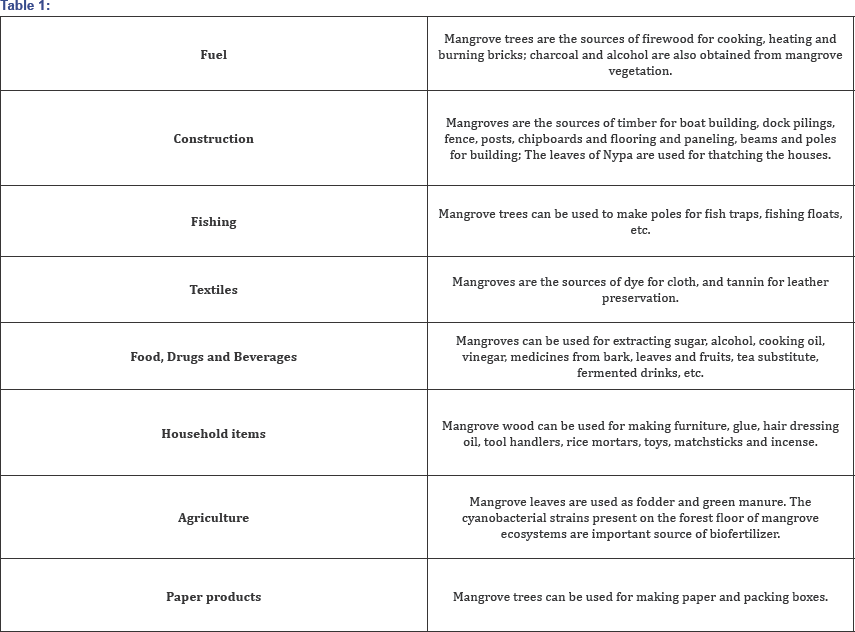
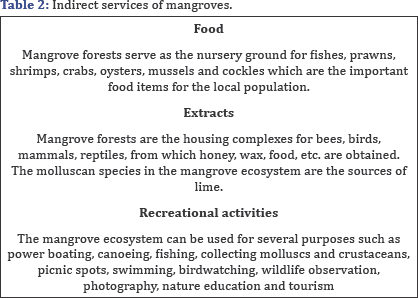
The medicinal properties of mangroves are mostly used by the local inhabitants in the remote areas of Sundarbans (21°13'N to 22°40'N and 88°03'E to 89o07'E], which is the home land of Royal Bengal Tiger (Panthera tigris tigris). The region sustains some 34 mangrove floral species. The bark, leaves and fruit extracts of mangrove are used to cure snake bites, stomach problems, fracture of bones etc. (Table 3).
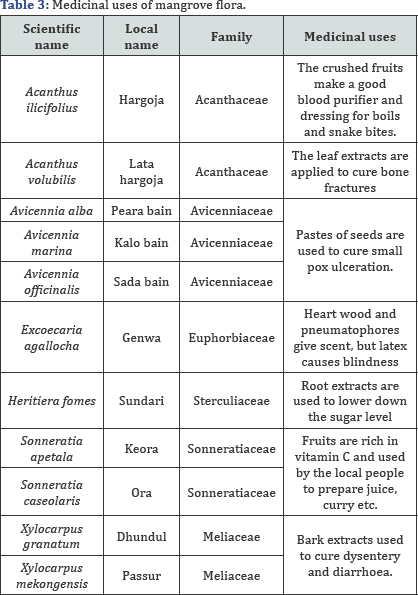
The policy makers, foresters and researchers are mostly interested in various ecosystem services of mangroves like erosion control, protection from tidal surges, provisioning of timber, fuel, woods, wax, honey etc. Plenty of literatures highlighting the provisioning services of mangroves are available [1-4] where there is no mention of medicinal properties. Dr Abhijit Mitra (the second author of this paper] personally knows a young researcher in 1994, Mr. Begun Kumar Bay (imaginative name] initiated to make poisonous weapon with dried latex of Excoecaria agallocha, but had to withdraw his research under the pressure of a faculty Gubojyoti Chatti (an imaginative character). However, it is a fact that the latex of Excoecaria agallocha causes permanent blindness (Figure 1). How many newspaper editors keep this information?
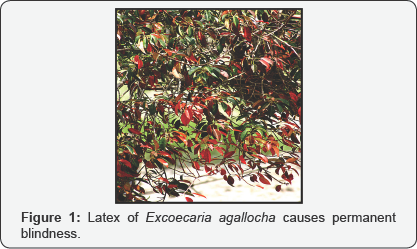
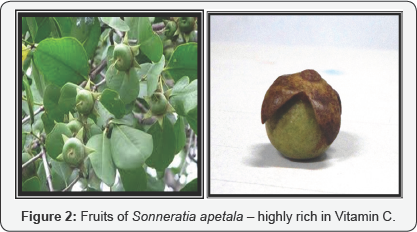
We made a sample survey in Indian Sundarbans on the traditional medicinal values of mangroves considering 5 categories of respondents i] forester ii] fisherman ii] quack doctor iv) researcher and v) local inhabitant, and surprised to find that educated researcher and forester have less idea about the halophytic medicine (using the product of ranking and % of voting as proxy] compared to poor fisherman, quack doctors and local inhabitants of the islands of Sundarbans. In the absence of modern medicinal facilities and hospital in the islands, people are depending on mangroves for their health care. Rarely people of the islands suffers cough and cold because of taking the extract of Sonneratia apetala (localy called Keora) fruits that are rich in vitamin C (Figure 2]. From this traditional knowledge, Prosenjit Pramanick, a research scholar of Techno India University, West Bengal made cookies, biscuits etc. from this fruit extract.
This research has not seen the light of publicity, nor it has been highlighted in any TV show. This is the fate of traditional knowledge, which is today superimposed by the artificial chemical products manufactured by big business houses. We believe that public awareness and education are important tools to float the medicinal property and traditional knowledge of the rural people on the surface of society. The ripples created by such floats will gradually get the momentum of business houses and finally may hit the desks of policy makers, when mangrove floral parts may be used as sources of alternative medicine or may be a new chapter in the canvas of organic health care.
References
- Mitra A (2013) In: Sensitivity of Mangrove Ecosystem to changing Climate. Springer, pp: 323.
- Mitra A, Zaman S (2014) Carbon Sequestration by Coastal Floral Community; published by The Energy and Resources Institute (TERI) TERI Press, India.
- Mitra A, Zaman S (2015) Blue carbon reservoir of the blue planet, published by Springer Oceanography.
- Mitra A, Zaman S (2016) Basics of Marine and Estuarine Ecology. Springer ISBN 978-81-322-2705-2 Environmental Science.






























